Simple AM modulators work by varying the amount of power flowing through the transistor which is serving as the RF output amplifier. By imposing an audio waveform on the power supply, amplitude modulation is achieved.
Rather than giving detailed examples, this page gives simplified schematics, followed by links to circuits that actually use the various techniques.
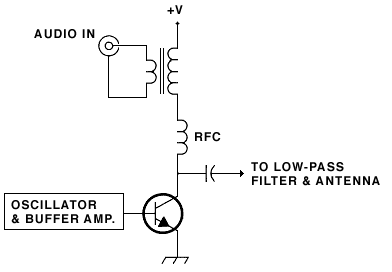
An external audio amp sends its output to the 8-ohm side of an 8-to-1000 ohm (or similar) audio transformer. The other winding of the transformer is inserted in the power supply going to the final RF amp transistor. The audio transformer must be rated to handle the level of power going through it; an inadequate transformer will produce a bad-sounding signal. In some cases it takes a lot of searching and experimentation to find the best transformer.
technique #2-A
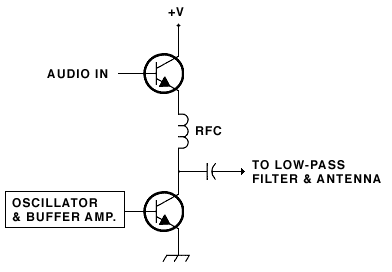
A lightly amplified audio signal is fed to the base of an NPN transistor. This transistor is inserted into the power supply going to the RF amp transistor. A choke between the two transistors keeps RF out of the power supply and audio circuitry. The RF choke must be rated to handle the level of current going through it.
technique #2-B
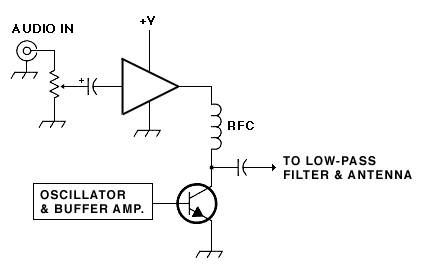
A line-level audio signal is fed to an audio amplifier I.C. The output of this chip is used as a power supply for the RF amp transistor.
This circuit is physically smaller and lighter than designs that use a modulation transformer. The audio quality is good.
technique #3
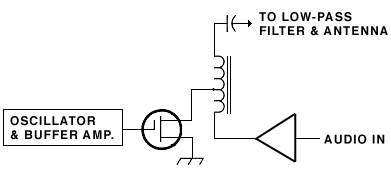
The RF output transistor is an FET (often an IRF510 or similar). The FET's source is grounded. The FET's drain is connected to a transformer, which has the modulation (audio) amp on one side and the RF output taken from the other side.
technique #4

This is the system used in Charles Wenzel's circuit. This design has had many re-incarnations, for example in a proposed 13.5 MHz transmitter circuit. The Wenzel modulator is capable of high quality modulation at levels approaching 100%. For 100 milliwatt transmitters, suitable transistors are 2N4401 or 2N5551.
Finals
Call 'em PA's, finals, or output amps, these are the last chance for the signal to get amplified before it is hurtled out into the world. Shown here are some partial schematics of finals taken from a wide variety of sources. Unless otherwise noted the input is on the left side, output on the right.
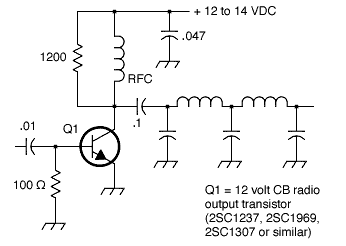
The circuit above will output 1.2 watts with a 13.8 volt power supply. Value of RFC not critical, but must be able to handle some current, try 15 turns of wire on a toroid core.
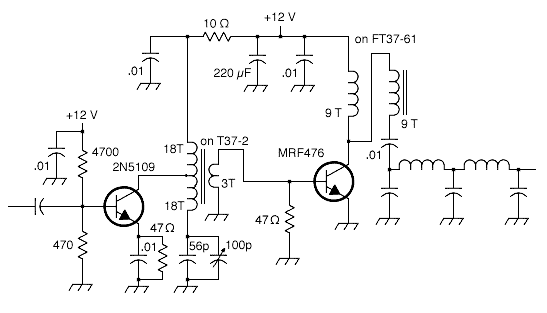
The circuit above will output 4 to 5 watts with an adequate power supply. The design shown is optimized for 7 MHz; the transformers may need a bit of modification to optimize for other bands. Provide heat-sinks for the transistors.
No comments:
Post a Comment